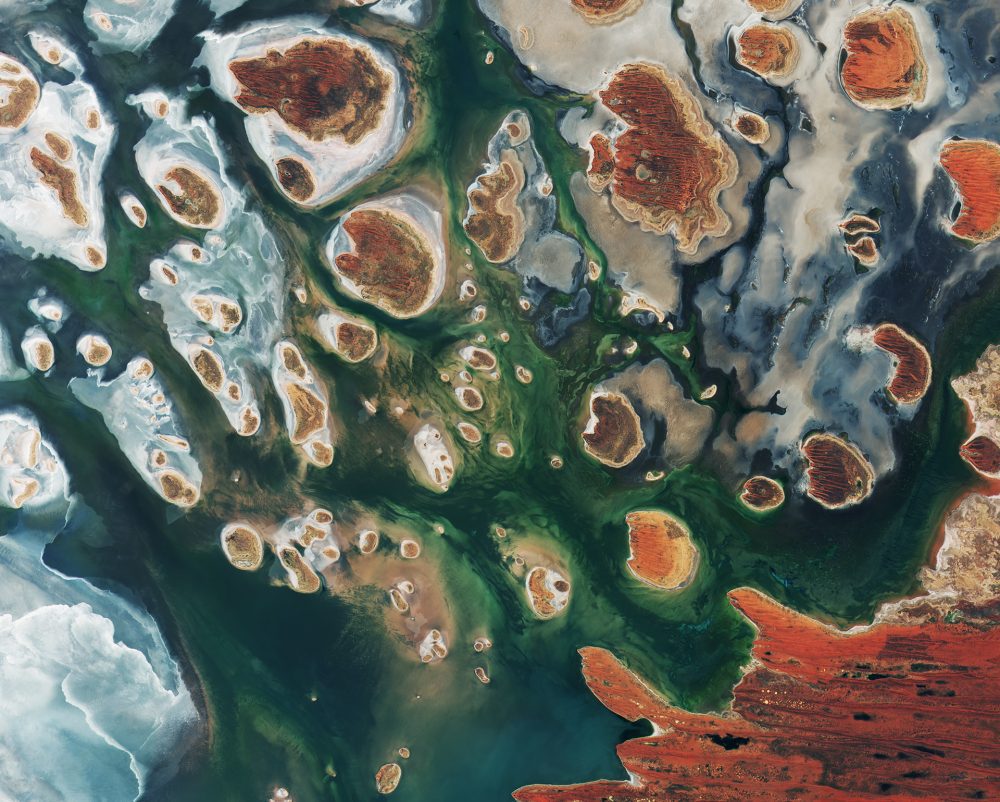

Brown hills speckle the eastern part of Australia’s Lake MacKay in this image from the Copernicus Sentinel-2B satellite. The lake lies at the edge of the Great Sandy Desert, which covers nearly 285,000 square kilometers.
Located on the border of the states of Western Australia and Northern Territory, the salt lake only sees water after seasonal rainfall—if at all. It’s classified as an ephemeral lake, meaning it exists only after precipitation. This is not the same as a seasonal lake, which sees water for longer periods.
About half of Australia’s rivers drain inland and often end in ephemeral salt lakes.
The greens and blues in this image show desert vegetation or algae, soil moisture and minerals—mainly salt. On some of the brown “islands” and on the shore in the lower right, east-west sand ridges forming lines in the landscape can be seen.
Photo Credit: contains modified Copernicus Sentinel data (2017), processed by ESA